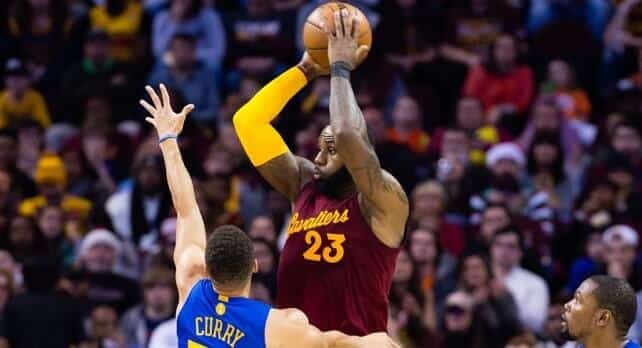Basics on Reading College Basketball Odds—Lines, Spread and Totals
Basketball Spread Explained Definition
College basketball offers sports bettors a wealth of games on which they can wager. During the season, you’ll find a long list of odds from the top books posted on Maddux Sports’ college basketball lines page. Of course, it’s essential that as a bettor you understand how to read these betting odds. In this article, you’ll learn all that you need to know regarding how to understand NCAA Basketball odds, including the point spread, over/under and moneyline.
- When a team has a point spread line with a minus sign (-), it indicates that the team must win the game by a greater number of points than what is indicated in the line. A typical point spread betting line will look something like this: Los Angeles Lakers +3.5 @ Toronto Raptors -3.5.
- The number (the point spread) signifies how much is to be added or subtracted from that teams’ point total at the conclusion of the game. If Kaitlyn bets on Boston, they would have to defeat Detroit by a total of 8 points in order for her to win the bet. If she bets on Detroit, they would have to win outright or lose by no less than 7 points.
The elements we’ll be looking at are often referred to by different names. The point spread is often called the spread or the line. The over/under bet is also known as the total. And the all important rotation number, which is used to identify each team that is playing, can be called the number or the rotation mark. By the way, sometimes people will lump all odds together by calling them lines or they may be referring to the spread when they ask, “What’s the line on the Duke game?” Many terms, over the years, have become interchangeable.
The good news is that although terminology may be laced with slang and some inconsistencies, when you look at college basketball lines posted online they all have the same elements and they all look pretty much the same. The primary difference is some books will list the teams for one game side-by-side and another will have one team on top of another. The main thing to remember is that the visiting club is always listed first.
Basketball Point Spreads
Starting from the left, the first things you’ll see will be the date and time of the game and right after that will be the rotation number and the team names. The point of the number is to create order and ease in making a bet. The numbers are listed in sequence and they are consistent from book to book.
A point spread in sports is a way for oddsmakers to make a matchup between two unbalanced teams more balanced by giving points to or taking points away from each team. The point spread is installed for a college basketball game, establishing both a favorite in the game, and an underdog. The favorite is the team predicted to win, while the underdog is predicted to lose. But not all favorites or underdogs are equal in every game. That's where the number on the spread comes into play.
As an example if Duke is playing at North Carolina and the Blue Devils have a rotation number of 901, then the Tar Heels, who are the home team and listed second, will be 902. In the next games listed, the visiting team would be 903 and the home club 904 and so the sequencing continues.
| Date/Time | Rotation Number | Team | Point Spread | MoneyLine | Total |
| Feb 12th | 901 | Duke | +2.5 | +120 | 152.5 |
| 8:00 | 902 | North Carolina | -2.5 | -140 | 152.5 |
Because every sportsbook uses the same numbers, it makes it easy for the bettor to locate the game and the odds at different sites and it provides a shorthand by which bettors can make their wagers over the phone or at a land-based book. To avoid confusion when betting, you don’t mention the name of the team but rather the rotation number.
These initial parts of the line, which are used to identify the game which is being bet, read from left to right—date and time of game, rotation numbers and team names. All elements to the right of this information relate to the college basketball odds for that specific game. This is where you will find the point spread, moneyline and over/under.
The reason the point spread exists is to make it more difficult for sports bettors to pick a winner. In college basketball odds, as in college football, some spreads can be huge. How big might they be? If a team such as Duke or North Carolina, both of which a powerhouses, plays a club such as Idaho State from the much weaker Big Sky Conference the spread could be 40 points or more. Without the spread, it would be much too easy to pick the winner. With the spread in place, bookies hope to even out the bets between the two teams.
This is how the point spread works. The team that is favored is listed with a minus or negative sign and a number, while the underdog is listed with a plus or positive sign and a number. The favorite has points taken away and the dog is given points. In our game where Duke is visiting North Carolina, the spread would be relatively tight since both clubs are national contenders. Duke, because they are visiting, might be listed at +2.5, which means North Carolina would be -2.5.
If you wager on the Blue Devils and they win outright or lose by less than three points, then you win. Bet on the Tar Heels and if they win by three or more points, you win. Often the point spread is listed with a ½ point faction or decimal, which ensures no matter what the score the game cannot end in a tie. If the spread is a whole number, then the contest could end in a tie and that would result in a push. A push means that all bets are off and all cash is returned to the bettors. If the spread was 2 in the Duke/North Carolina game and the final score was Duke (+2) 88 and North Carolina (-2) 90, it would be a tie and a push.
The other number you’ll see associated with the spread is the stake—how much you have to bet to realize a profit of $100. The most common stake you’ll see is listed as -110. This means that you must wager $110 to win $100. Note that the payout on a spread wager is not even money (1:1), as some will say. If it were, you would wager $110 to win $110. The odds are a bit less than even, standing at 0.90:1.00. That’s 10% less than even. Where does that 10% of your payout go? It’s taken by the book as part of their commission, which is also called vigorish or vig.
Next, to the right of the point spread, is the moneyline. Note: some books may list the moneyline separately under a moneyline tab. But often the line is part of the odds listing. This type of bet is quite different from the spread due to the fact that no points are given or taken away and the basketball team that wins outright is the one that pays off. The way the books even the playing field is they charge more for you to wager on the favorite while offering a smaller payout and charge less to bet on the dog while providing a bigger payout.
Using the Duke and North Carolina matchup, the moneyline would have the dog Blue Devils at +120 and the favorite Tar Heels at -140. This moneyline is directly connected to the spread of 2.5. With the moneyline, a club that’s posted on the plus side shows how much you’ll win when wagering $100 and when a team is listed in the negative that tells you how much you must bet to win $100. In our example, you would wager $100 on Duke (+120) to win $120 and $140 on North Carolina (-140) to win $100.
Below is a list of the corresponding point spreads as they relate to the moneyline, ranging from -2 to -10.


| Point Spread | Money Line |
| -1 | -120/+100 |
| -2 | -130/+110 |
| -2.5 | -140/+120 |
| -3 | -155/+135 |
| -3.5 | -175/+155 |
| -4 | -200/+170 |
| -4.5 | -220/+180 |
| -5/-5.5 | -240/+190 |
| -6 | -270/+210 |
| -6.5 | -300/+220 |
| -7 | -330/+250 |
| -7.5/-8/-8.5 | -360/+280 |
| -9/-9.5 | -400/+300 |
| -10 | -450/+325 |
With college basketball odds the last number you will see, which is posted to the right, is the over/under. As it is with the spread, they may not be expressed as a whole number. The over/under represents the total number of points that may be scored in the game. Your wager is either on the over or the under.
In the Duke/North Carolina contest, the total would be around 152.5. If the sum of the points scored by both teams is 153 or higher, the over wins and if it is 152 or lower, then the under wins. As it is with the point spread, this number comes from handicappers working on and assessing matchups, stats, coaches and player performance.
Once odds are posted for a game, sports bettors need to decide quickly, based on research, which bets they are going to take. Early college basketball odds tend to be soft and offer more leeway than adjusted odds, which get tighter as game time gets closer. The elements discussed in this article are all common in NCAA Basketball odds listings. Know how to read each part in order to make smart and timely bets.
Basketball point spread explained: This is a type of bet that’s used on sports where teams score points like Basketball betting, American football, baseball, etc. Keep reading to find out how point spread betting works.
What is a Basketball Point Spread?
A point spread is the amount of points, set by a sportsbook, that a team must win by, or stay within, for the bet on that team to pay out.The team generally believed to be more likely to win in this game, the favorite, is assigned a number of points, written with a “-“ in front of it. If they win the game in question by more than that many points, they have covered the spread, and bets on that team’s point spread win.
The underdog—the team considered less likely to win—‘s point spread is expressed with a “+” in front of it. If the underdog can either win or lose by less than their point spread number, bets on that team’s point spread win. To learn more about basketball betting, check our article on how to bet on basketball.
How does Point Spread betting work?
The best way to explain point spread betting is to give an example. Since we are talking about basketball here, lets give an example that involves a basketball fixture. For instance, if the Knicks are struggling (as they tend to) and they play the Miami Heat, the point spread might look like this:

- New York Knicks (+8) at Miami Heat (-8)
In this case, the Heat would have to win by at least 9 for bettors on the Miami Heat at -8 to be paid out. This situation is commonly referred to as covering the spread. For the New York Knicks to cover the spread at +8, the team would have to either win the game outright, or lose by 7 or less.
The Push
However, covering the spread is not the only outcome that can happen in these games. It’s possible that the teams play to a score that separates them by the exact number of the spread. In that case, the bet would be graded as a push. When that happens, wagers on both sides of that point spread would be refunded. To avoid the push, try to pick a spread that’s set at half points like – 8.5. Some bookmakers only offer spread like that to avoid getting a push outcome.

Keep in mind that the NBA is not the only place where spread betting can be used. It works on any basketball game including college NCAAF games and FIBA tournaments. However, spread betting can be used on other sports as well. You can learn more about basketball right HERE.
College Basketball Spreads

How to bet on MLB Baseball?
In baseball, betting on the point spread is often referred to as betting on the run line. The point spread is a betting line that balances the line between two uneven teams. Bettors can then can wager on either side while enjoying reasonable value on their bets. For example, lets imagine that the Tigers are playing against the Mets. In this case the Detroit Tigers are the favorites. The New York Mets, on the other hand, are the underdogs. If we imagine all of that, the run line might look like this:
Nba Basketball Spread
- New York Mets +1.5 (-190) at Detroit Tigers -1.5 (+160)
Basketball Spread Explained Chart
Because the Tigers are the better team and tend to crush teams like the New York Mets, they are favored to win the game. When a point spread is written out, “-“ is used in front of the favorite. For a bet on the favorite, in this case the Tigers, to win, the team must win by at least the number after the hyphen. In this case, bettors on the Tigers would win their point spread bets if the Tigers win by at least two, for example 8-5.
The underdog is indicated with a “+”. To get a winning bet, the Mets have to win the game. Additionally, if they lose by less than the spread, the bet is also won. In this case, the Mets would have to win or lose by no more than one run.
